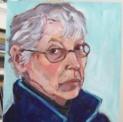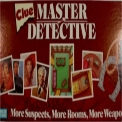Wednesday, April 2: Tune It Or Die!
WHEN MAPS GET LOST
by Robert Lopresti
If you find yourself within reach of the current (April) issue of Smithsonian Magazine, open to page 98 and you will find a picture of yours truly. No, it’s not an article about living fossils, wise guy.
“To Catch a Thief,” by Steve Twomey, is about people who steal from libraries and archives, and how honest researchers and historians try to catch them. The main focus is on a Civil War writer named Dean Thomas who recognized that a letter, on sale via eBay, was supposed to be in the National Archives. This led to the conviction of Denning McTague, who, while working as an unpaid intern at the National Archives branch in Philadelphia, stole over 160 documents.
The long weekend
But McTague is not how I found myself in the magazine. I’m featured in a sidebar about Western Washington University’s involvement in what Twomey calls “a lucrative history-for-sale scheme that might have more victims than any in recent years.” I’ll try to make this as brief as possible. That ain’t easy, so bear with me.
The story begins just before President’s Day weekend in February 2006 when Julie Fitzgerald noticed something strange. Julie had worked in the government documents department of Western Libraries for more than fifteen years and she had just been promoted. The following week she would be working in a different part of the operation. But that Friday Julie made her rounds through the government information stacks and noticed an older community user looking at some volumes of the Congressional Serial Set.
Now, that’s great. Our library is open to the public and the more people who use our books, the happier we are. But this guy rang a bell because he was paying careful attention to Julie. She got the feeling he wanted to know when anyone – especially a library employee — was near him. It was suspicious but he wasn’t doing anything she could object to, so she didn’t.
But Julie didn’t forget him either, and when she came back to work on Tuesday she went to the cubicle where he had been working. The books weren’t there. They weren’t on the shelf where they belonged either.
History lesson
Walking through the stacks, Julie found them. They were out of order, in some cases upside down, and it was easy to see that they had been violated. Here is a photo of one of them — click on it for a larger image..
She notified me and the hunt was on.
History lesson
To make a long story shortish, we eventually determined that at least 108 volumes had been damaged, and at least 648 pages stolen. (Why “at least?” It wasn’t always possible to tell. If there is a map tucked between pages 50 and 51, and someone removed it neatly, how would you know?)
Almost all of the books were from the Serial Set. To simplify, these books contain reports to and from Congress, some dating back to the 1830s. About three quarters of the stolen goods were maps. The rest were charts, photographs, illustrations – all suitable for framing and hanging on the wall.
- Prints of drawings and maps for the building of the Erie Canal (1835)
- Map of the seat of war in Florida (1837)
- Sketch of Buttermilk Channel, New York Harbor. (1849)
- Right crushing claw of female lobster (1895)
- Photographs of Hawaii (1901)
- Pleasant Porter, principal chief Creek Nation (1902)
- Rank of most populous cities at each census (1902)
- Map of Yellowstone National Park (1913)
Those are the titles of eight of the pages that were stolen. As I said, there are at least 640 more.
Questions, answers
So, how did somebody steal so much? I can’t prove this, but I think the bad guy deliberately got himself locked in the building over night. (Before we go any further let me point out that this was two years ago. We have improved our security since then, and I am NOT going to tell you how.)
We assumed he stole to sell, so how could we catch him doing so? First we sent lists of the missing material to map librarians, rare book dealers, and other groups. Then we hit eBay.
There are lots of places you can sell to antique collectors. But eBay may be the biggest, and it’s also the easiest one to track. We set up about 40 permanent searches. You can do it yourself, by the way. For example, I could asked eBay to search for “Buttermilk Channel.” Then whenever a map of the channel, or a book with those words in the title, or a lovely hand-stitched sampler of Buttermilk Channel, whatever, was offered for sale, I received an email about it.
Within a month it was obvious that more possible matches for our pages were showing up on one seller’s page than on the rest of eBay put together. That online store was Montanasilver, run by James L. Brubaker. At this point I should probably point out that Mr. Brubaker has not been tried and convicted in connection with this theft.
But that’s when we started watching him.
Allies to the east
In May I got permission to try to buy two maps from Brubaker to see if they were indeed from our books. I was afraid that a Bellingham address might make him suspicious so I asked friends on the east coast to be my beards. Ken in Virginia bid on a map of South America. Lori in New Jersey went after a nineteenth century map of New York. When their bids were successful they shipped the maps to the University Police, who took them to our state’s crime lab. In September the lab gave us the thumbs up. Both of the publications matched physically with our copies of the books. We had just bought back some of our stolen property.
That wasn’t all we did that summer. A smart cop at the University Police made a suggestion that I, as a mystery writer, should have thought of, damn it. They checked the records and discovered that, sure enough, a cop had written Mr. Brubaker’s car a parking ticket on campus on the weekend of the theft. There was more evidence I’m not going to discuss here.
And now came the really hard part: finding some government agency who would pursue the case. That took, so help me, an entire year.
Why so long?
Well, a lot of reasons. First, it wasn’t like anyone at my university could dedicate themselves full-time to hunting for a government go-to guy. Second, the various government agencies had other things to worry about, like murderers and terrorists. Plus it was interstate crime, which complicated things. And each of these publications individually was small potatoes. They sold for an average of $30 each.
But there was another reason I heard about second hand. Apparently one government agency employee said, “We don’t deal with cases that only have one victim.”
That one drove me nuts. This university has twelve thousand students, plus many more future students, and they are all victims of the theft. Not to mention all the community users. But also, I didn’t believe for a minute that we were the only library the thief hit. And yet, if any other libraries had gone public about it, I sure hadn’t heard it.
Maybe some libraries kept quiet out of embarrassment. On the other hand, the problem might be that they didn’t have someone like Julie Fitzgerald working for them. If Julie hadn’t spotted the theft immediately weeks or months might have passed before we realized what happened, and then it would have been impossible to prove it was all a single event.
But after a full year of hunting, the University’s Sergeant Bianca Smith finally found Great Falls Police Detective Bruce McDermott. McDermott did some research and found that several government agencies had been investigating Brubaker for years, but did not have the evidence to get a search warrant. Now along came Sergeant Smith with a bushel of evidence, looking for someone to use it. Bingo.
A busy December
The first week of December I got a flurry of calls and emails from Montana. Could I estimate the value of our stolen property? Conservatively, nineteen grand. Were there currently any pages on Montanasilver that might be Western’s property? About a dozen. Now, as I understand it, they had what they needed to go to a judge and say, there is a crime currently underway. They got their search warrant.
On December 12 officers of Immigration and Customs Enforcement (part of Homeland Security) served a search warrant on Brubaker’s property. They found that dozen or so pages that might be stolen from Western (we won’t know until the crime lab finishes its comparison, which might take months.)
And, oh yes, they also found in the vicinity of 20,000 other maps and prints, hundreds of Indian artifacts, and a thousand or so books with property stamps from about 100 libraries.
Turns out there was more than one victim after all.
Breaking news
Last Thursday James L. Brubaker was arrested and brought to federal court. You can read more about that here.
This was an attempt to get down the bare facts. I warned you it would take some time. Next week, unless circumstances get in the way, I will write a little about how people have reacted to this event. Me included.




















I apologize… I forgot to put in a link to the Smithsonian story. It is available at http://tinyurl.com/2j6ch7
You’re my hero, Rob!
Yer tickin’ me off, Rob, teasin’ us and then refusin’ to divulge evidence we crimefighters can get our teeth into. After hearing about this, we finally get a chance to get an insider’s story!
Our Orange County, Florida, library patrons aren’t nearly so erudite. They were apparently destroying nude prints in the collection.
I’m glad you shared this with us. Are you going to give us a book about the crime? We’ll promise not to slice out the pages.
Fantastic story!
I read the article yesterday. Great stuff.
This is fascinating. Well done!
WOW! I bummed through the Smithsonian issue the other day but I didn’t even glance at the article! And I remember hearing about this story! There’s a whole novel or hell a nonfiction book in this somewhere!!
Suggested Titles: “The Thief of Time” or “The Library Policemen” (note the plural!)
Thanks for the comments. It’s been interesting. I figure the fifteen minutes is probably up, and that’s fine. By the way, if you read the Smithsonian article on line you didn’t see the best part, which is the cool photo Brian Smale took. You can see it on roblopresti.com
I’ll do that! I guess now you can quote the great t.v. show “Jake 2.0” and say “Life just got real interesting…”
The picture of the desecrated book is painful to look at!
Diane-
“Desecrate” is a great word for the book. Thanks for that.
This is an echo of the “long tail” idea about only a few copies of a book being sold per year and yet real money can be made through digital POD technology.
Brubaker has been chiseling his way back and forth through the West for many years — decades — and he is part of a network. (Check out John Flaherty, another denizen of Great Falls. I thought Brubaker lived in Kalispell and know there are others like him there.) Because the items are “small” and isolated and “of minor value” except to specialists — ha, of NO value to most folks on the street — he’s been doing this for decades and he is not alone, though probably most of the perps are aging out. Also, Indian artifacts are much more closely scrutinized nowadays and minor “cowboy art” as well. The fact that there are many auctions helps the perp, but the practice of posting photos cuts the other way.
Sure would love to see all this worked out in a mystery! Maybe I’ll do it myself!
Prairie Mary